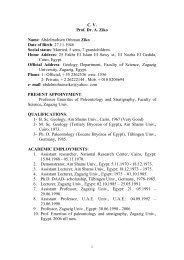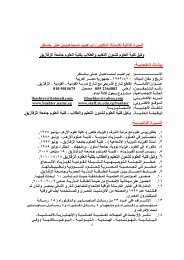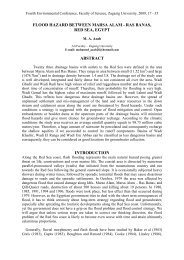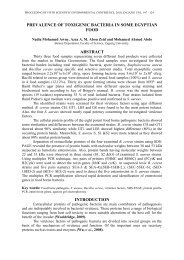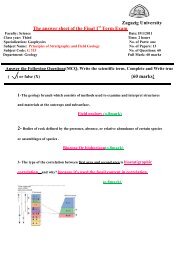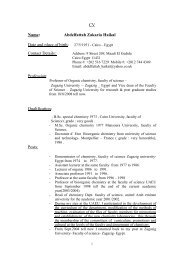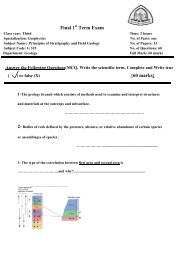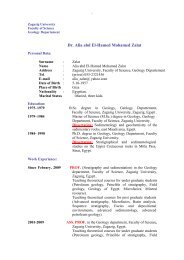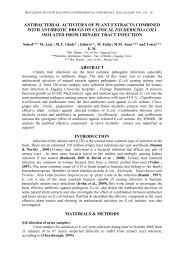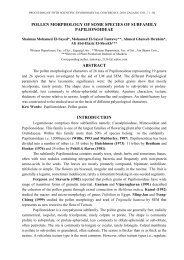GEOPHYSICS LETTERS
GEOPHYSICS LETTERS
GEOPHYSICS LETTERS
- No tags were found...
You also want an ePaper? Increase the reach of your titles
YUMPU automatically turns print PDFs into web optimized ePapers that Google loves.
Abeer Abd El-Rehim El-Kenawy 3with the maximum value of 4 mgal and trending NE-SW direction.This may be due to limited thickness of the sedimentary cover or thepresence of dense rock sequence in [lis part compared to thesurrounding.On the other hand, some areas of low gravity are found inthe northern, central and.easternparts with the minimumvalues of - 25mgal.Generally, the Bouguer anomaly map shows three different trends.The first trend occupies the northwestern part and has nearly NE-SWdirection. It is represented by linear anomaly which may be associatedwith fault planes. The second trend is located nearly the central part withN-S. direction and is represented by oval shape anomaly of -25 mgal.The third trend is located at the western and eastern parts with NNE-SSW, direction and consists of two anomalies of semicircular shapeswith gravity values ranging between -6 and +4 mgal.QUANTITATIVE INTERPRETATIONThe quantitative interpretation is carried out using trend analysis,Griffin technique, second vertical derivative, least squares, modeling,spectral analysis, Euler deconvoluation, and construction of Gridepthsolutions using 2-D Euler deconvoluation.1- Trend analysisThe Bouguer anomaly map was analyzed and statistically studiesto determine the tectonic elements probably present in the area. The firsthorizontal gradient CVxz)is calculated along 56 profiles. From the resultof these calculations the first horizontal gradient map was constructed(Fig. 4). The deduced fault sites along all profiles are transferred andconnected together to give the structural pattern of the area (Fig. 5).The application of trend analysis reflects the main tectonic trendsaffecting the area and arranged according to their commulative lengthpercentage in 'the following six categories; Aqaba (Nl5" -25°E), Syrian(N45°-65°E), Suez (N35°-45°W), Mediterranean (E-W), Najd (N65°W)and East Africa (N-S) trends.The statistical study of the trend analysis revealed that 81 fault linesaffect the area. The results showed that the main azimuth distribution offractures is the Aqaba (N15°-25-:;E) which includes all lineamentsstriking from N15°E to N 30"E. The Aqaba trend belongs to the lateTertiary and Holocene orogeny (Tealeb, 1979b). The second important



